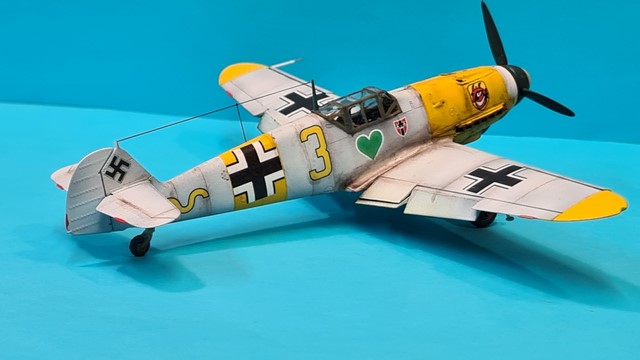2023 was a decent year for 'FalkeEins-the Luftwaffe Blog' - a good number of posts, some good feedback, plenty of contacts getting in touch, along with a week at the ECPA- D in Paris - one of the world's great photographic archives - and a long weekend in Belgium scanning negatives of Luftwaffe photos with friends! Some nice images and stories hopefully 'brought back to life'. Not too many 'new' Ebay posts either - everyone appears to be doing that nowadays. Reposting long lost photos is good - but I always prefer to present some text as well if possible and that takes time to 'research' and/or translate.
Photo Use
This blog is also though a place to post reference photos and artworks for model builds, planned or otherwise. Modellers make up a large proportion of this site's visitors - check out modelforum.cz and put 'FalkeEins' in the search box - when I last checked they had reposted several hundred pages of this blog on their forum (!!) Getting the occasional 'credit' on an Eduard kit box probably helps here.
Much Luftwaffe photo content comes from 'private' albums - especially on the German side. It is difficult to claim 'copyright' on these as the original photographer is no longer alive and in many instances a good number of copies will have circulated. In fact, you could argue that many of these images are already public domain, having been widely published in books, pamphlets and newspapers during the Third Reich era. Despite this, some 'modern' researchers believe that if they 'found' the photo, it is theirs! Similarly with various government sources, whether it is the U.S. National Archives, the UK National Archives, the Bundesarchiv, or others, such as the ECPAD in Paris. Government documents, pamphlets, photos, film clips, etc. are in general terms exempt from copyright laws and are in the 'public domain'. This applies to the US as well as most other governments. German PK images will have appeared in many instances in wartime publications and with the passing now of the original photographers are also thus effectively free of copyright! Many, especially those posted online by the Bundesarchiv are in the 'public domain'. Even the ECPA-D has put many pages of wartime Luftwaffe photos online that cannot be purchased and are public domain.
Archives have been putting their holdings 'on-line' in searchable data bases for some time now. Of course most archives charge reproduction fees for works that appear in 'commercial enterprises' but also make available images that can be posted on 'personal' sites through a 'Creative Commons' license. Both the IWM and Bundesarchiv's digital content is effectively 'free' for non-commercial use on blogs like this one under 'Creative Commons'. Even the ECPA-D is starting to digitise their (German) collection, although their imagesdefensegouv.fr site FAQ states "no reproduction", even on 'non-profit' sites - but then provides an embed code for various social media sites most notably FB and Twitter! To quote one author/publisher, this organisation (the ECPA-D) really has to get real about the fees it charges for photo reproduction in books! Admittedly they have little or no need to display any 'commercial' nous, being a government-run department of the French military and the 'German collection' is only a small part of their huge archive. Most of its 'jewels' appear to languish 'unused' and 'unseen' in its archives, although that seems to bother few people in the organisation as far as I can see. However they were very good about furnishing 'hard copies' for personal use, at only 2 euros per image. However from the summer of 2024 they will no longer process hard copies and the fee for a digital copy has risen to around 30 euros IIRC. But, and as reported elsewhere on this blog, that makes a trip to the ECPA-D a very exciting visit - a 'must' for Luftwaffe enthusiasts!




















































